March 30 to April 5
About 30,000 disappointed visitors lingered on the streets of Kenting National Park on the evening of March 28, 1986. Established just two years earlier, Taiwan’s first national park had never seen so many visitors — all hotels were full, hundreds of tents cramped the campgrounds and the latecomers slept in their cars.
Most had traveled here just to catch a glimpse of Halley’s Comet, which only passes by the Earth every 76 years or so. That year, the comet was more visible the further to the south, and Kenting’s location at Taiwan’s southernmost tip made it the ideal viewing location.
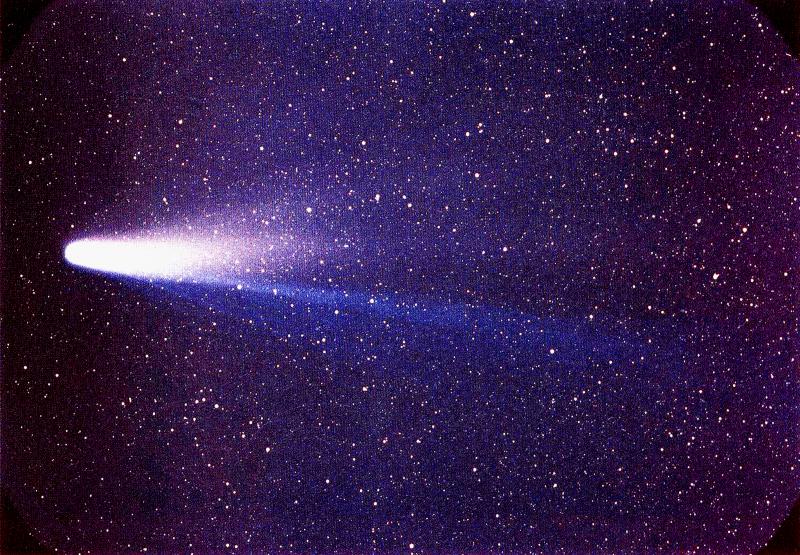
Photo courtesy of Wikimedia Commons
But that night, thick clouds dashed everyone’s hopes. People were prepared for another letdown the next evening as the weather still hadn’t let up. Around 3am, however, the comet suddenly appeared in the sky. It remained visible for almost an hour.
Over the next two weeks, comet chasers continued to flood into sleepy Kenting. While only an estimated 2 percent of those who tried to get a glimpse of the comet saw it, they took the time to enjoy the area’s offerings, kickstarting Kenting’s rapid transformation into a tourist hotspot.
The Minsheng Daily (民生報) reports on a cloudy day in early April: “People are swimming and playing in the sand, and the water is dotted with sailboats and pedal boats … most visitors seem to have forgotten the regret of not being able to see Halley’s Comet.”
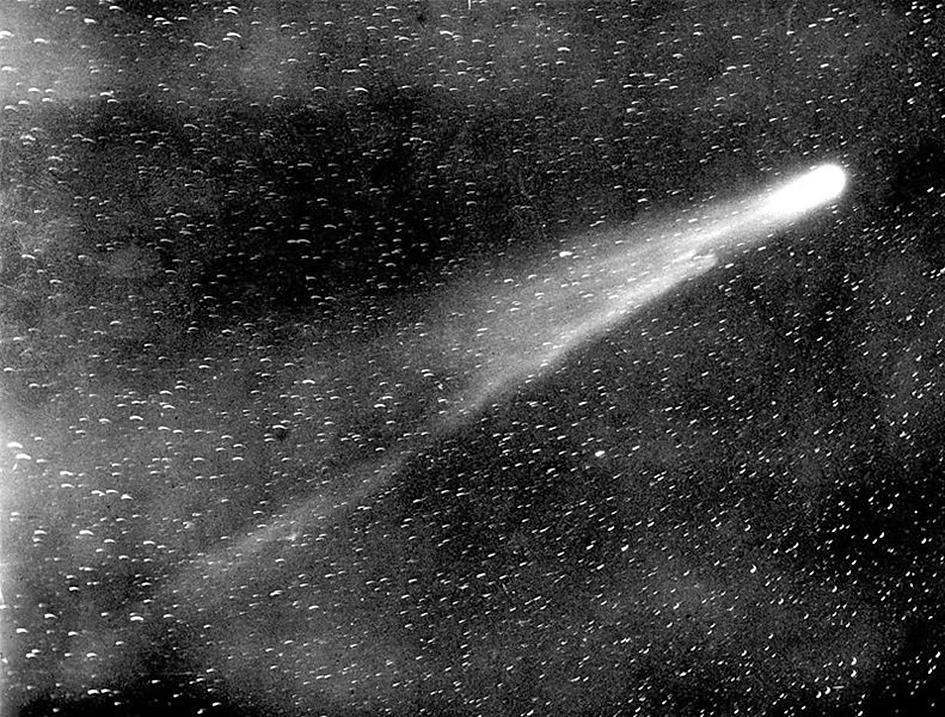
Photo courtesy of Wikimedia Commons
BAD OMEN?
Records on the previous time Halley’s Comet came by in 1910 can be found in the Japanese-language Taiwan Daily News (台灣日日新報). According to space.com, that year’s arrival was particularly spectacular as it flew by just 22.4 million kilometers from Earth, compared to 62.7 million kilometers in 1986.
In December 1909, the newspaper announced that the comet was near, noting that it would be possible to see it with the naked eye between April 16 and May 18.
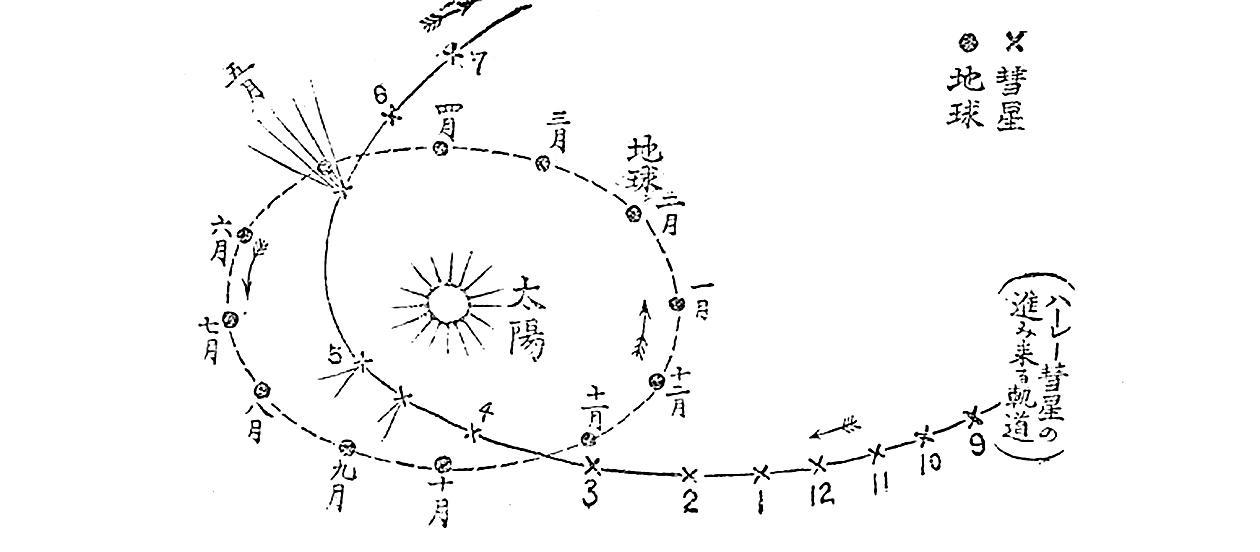
Photo courtesy of Wikimedia Commons
In mid-January, however, the paper reported that the comet had already become visible to the naked eye in Taiwan. It likely wasn’t Halley’s but the Great January Comet of 1910, which appears every 57,300 years and became visible from the northern hemisphere during exactly that time period. On Jan. 29, the newspaper reported that the observatory in Taipei sighted another comet — but this time concluded that it wasn’t Halley’s, but Comet Daniel, which had been discovered a month earlier.
When the actual Halley’s Comet became visible across Taiwan, the newspaper tried to dispel rumors among Taiwanese that the comet was a bad omen. It already ran an article written by a Taiwanese a few years earlier that attempted to refute the belief that comets brought disaster and famine to places where it is visible.
The comet unsettled Taichung intellectual Chang Li-Chun (張麗俊) when he first spotted it in late March, commenting in his diary that they often bring bad luck. On May 2, he noted that the comet’s tail was getting longer, and wondered what fate it would bring. In Europe, there was similar panic, especially when people learned that the comet’s tail would brush against the Earth on May 19. Many blamed the comet for the death of King Edward VII on May 6, while in Asia it was linked to the Qing Empire’s demise the following year.
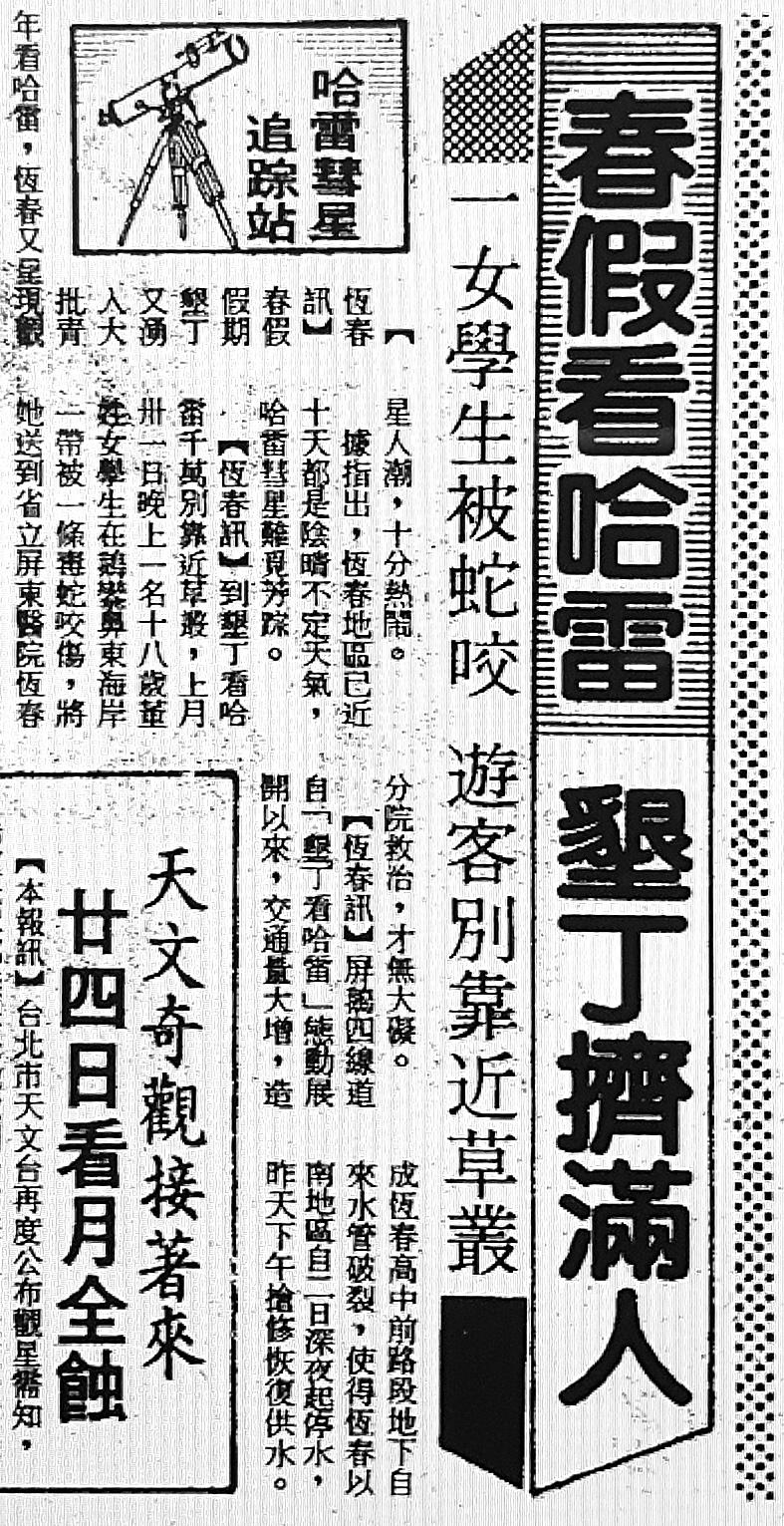
Photo courtesy of National Central Library
The newspaper noted that the morning of May 19 would be the best time to see the comet with the naked eye — but due to sunlight it would be best to view it through tinted glass. People rushed to buy glass from shops in Taipei’s Dadaocheng and Wanhua areas, but unfortunately the sky was cloudy that day. Chang writes that people were equally excited in Taichung, but it rained.
PACKING THE PARK
In 1984, the government established Taiwan’s first national park in Kenting. It was touted by the government and media as one of the best places in Taiwan, along with Orchid Island, to view the return of Halley’s Comet in 1986. The spectacle would be far less impressive than that of 1910 due to the comet’s distance and awkward positioning in regard to the sun and the moon, and poor weather was expected during most of its stay. But that didn’t dampen anyone’s enthusiasm, since most would only have one chance to see the comet in their lifetime.
The major newspapers only reported on the comet sporadically, while the Minsheng Daily ran articles almost daily on its development. “The comet will get brighter and its tail longer between early and mid-April, and now is the time to capture its beauty,” it stated, providing detailed directions in where to look and what camera equipment and techniques to use.
A few teams of Japanese astronomers and enthusiasts also visited Kenting as their country was too northerly to see the comet clearly.
The belief that comets brought bad luck persisted, as its colloquial term saobaxing (掃把星, literally broom star) became a euphemism for those who seem to bring misfortune to people around them. When the media asked actress Hsiao Hung-mei (蕭紅梅) about her trip to Kenting, she replied, “I didn’t want to go at first. If my friends weren’t so enthusiastic, who would want to go see that unlucky star? I don’t have any work right now, do you think I need more bad luck?”
The bad weather continued to persist, but “every day once the sun went down, southbound roads in Kaohsiung and Pingtung were lined with tour buses, cars, trucks, motorcycles and even bicycles. The freeways would be packed until 2am or so,” writes the Minsheng Daily.
Noted amateur astronomer Chen Pei-kung (陳培?), who was the first person in Taiwan to photograph the comet several months before it became visible to the naked eye, was frequently spotted in Kenting giving photography advice to visitors.
The United Daily News reported that over one million people visited Kenting during this period, turning Kenting into a sleepless town. Shops stayed open for 24 hours, and hotel staff assumed the “extra responsibility of waking its customers up when the comet appeared.”
After the comet departed, then-Taipei City Observatory director Tsai Chang-hsien (蔡章獻) lamented that it wasn’t just bad weather that prevented most people from seeing the comet — it was also lack of education, as many looking through his telescope didn’t know that they were looking right at it. On a side note, Tsai was the first Taiwanese to have an asteroid named after him.
“Before, people only looked at the lights on Earth, and seldom gazed at the stars … This time, everyone was so concerned about the comet. Taiwan’s astronomy education begins here! It begins now!” he writes.
Taiwan in Time, a column about Taiwan’s history that is published every Sunday, spotlights important or interesting events around the nation that have anniversaries this week.
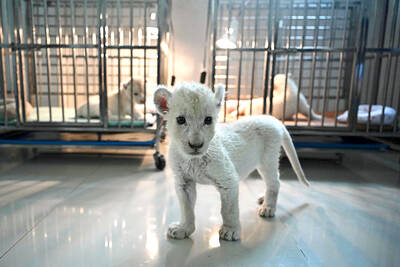
Behind a car repair business on a nondescript Thai street are the cherished pets of a rising TikTok animal influencer: two lions and a 200-kilogram lion-tiger hybrid called “Big George.” Lion ownership is legal in Thailand, and Tharnuwarht Plengkemratch is an enthusiastic advocate, posting updates on his feline companions to nearly three million followers. “They’re playful and affectionate, just like dogs or cats,” he said from inside their cage complex at his home in the northern city of Chiang Mai. Thailand’s captive lion population has exploded in recent years, with nearly 500 registered in zoos, breeding farms, petting cafes and homes. Experts warn the

No one saw it coming. Everyone — including the Chinese Nationalist Party (KMT) — expected at least some of the recall campaigns against 24 of its lawmakers and Hsinchu Mayor Ann Kao (高虹安) to succeed. Underground gamblers reportedly expected between five and eight lawmakers to lose their jobs. All of this analysis made sense, but contained a fatal flaw. The record of the recall campaigns, the collapse of the KMT-led recalls, and polling data all pointed to enthusiastic high turnout in support of the recall campaigns, and that those against the recalls were unenthusiastic and far less likely to vote. That

The unexpected collapse of the recall campaigns is being viewed through many lenses, most of them skewed and self-absorbed. The international media unsurprisingly focuses on what they perceive as the message that Taiwanese voters were sending in the failure of the mass recall, especially to China, the US and to friendly Western nations. This made some sense prior to early last month. One of the main arguments used by recall campaigners for recalling Chinese Nationalist Party (KMT) lawmakers was that they were too pro-China, and by extension not to be trusted with defending the nation. Also by extension, that argument could be
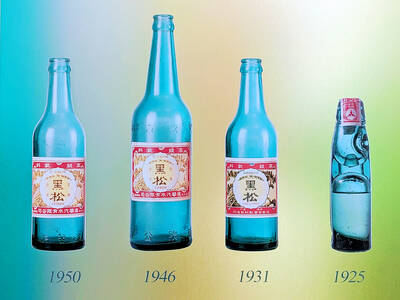
Aug. 4 to Aug. 10 When Coca-Cola finally pushed its way into Taiwan’s market in 1968, it allegedly vowed to wipe out its major domestic rival Hey Song within five years. But Hey Song, which began as a manual operation in a family cow shed in 1925, had proven its resilience, surviving numerous setbacks — including the loss of autonomy and nearly all its assets due to the Japanese colonial government’s wartime economic policy. By the 1960s, Hey Song had risen to the top of Taiwan’s beverage industry. This success was driven not only by president Chang Wen-chi’s